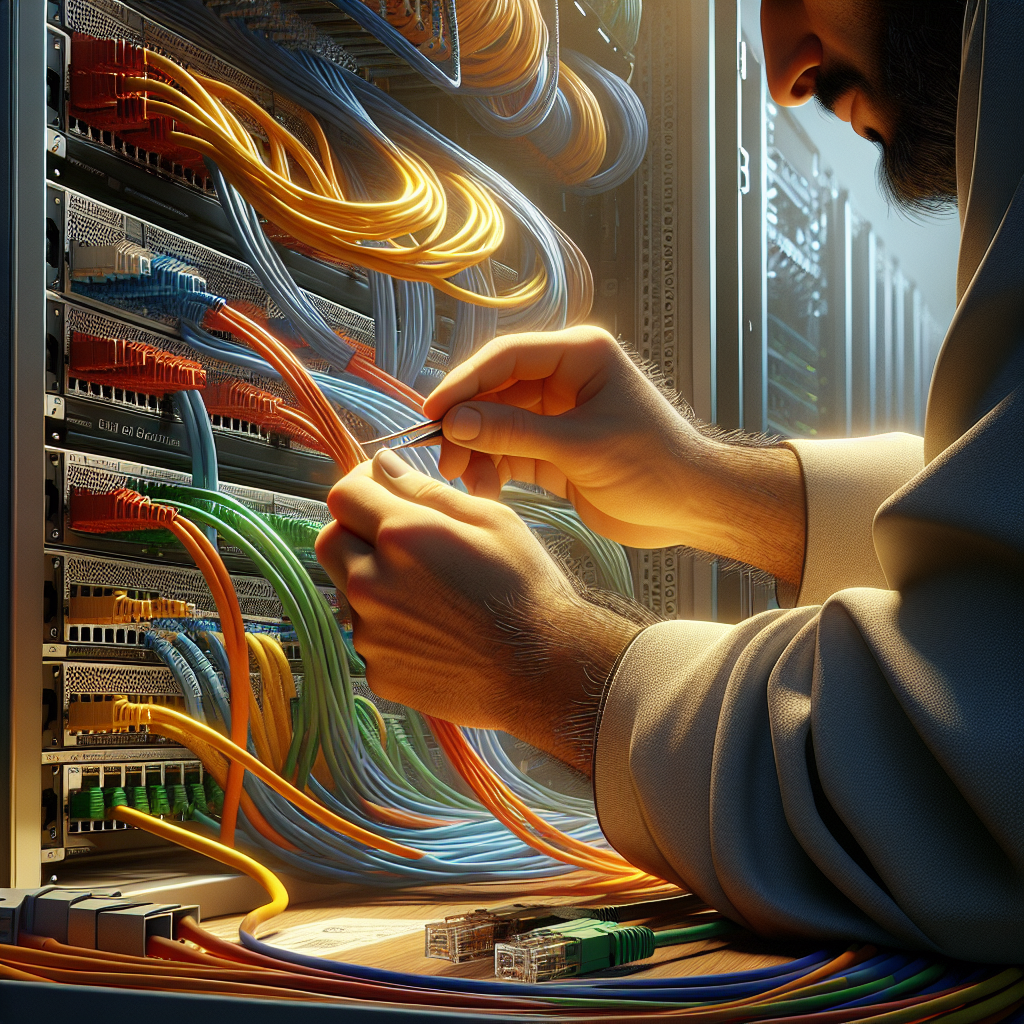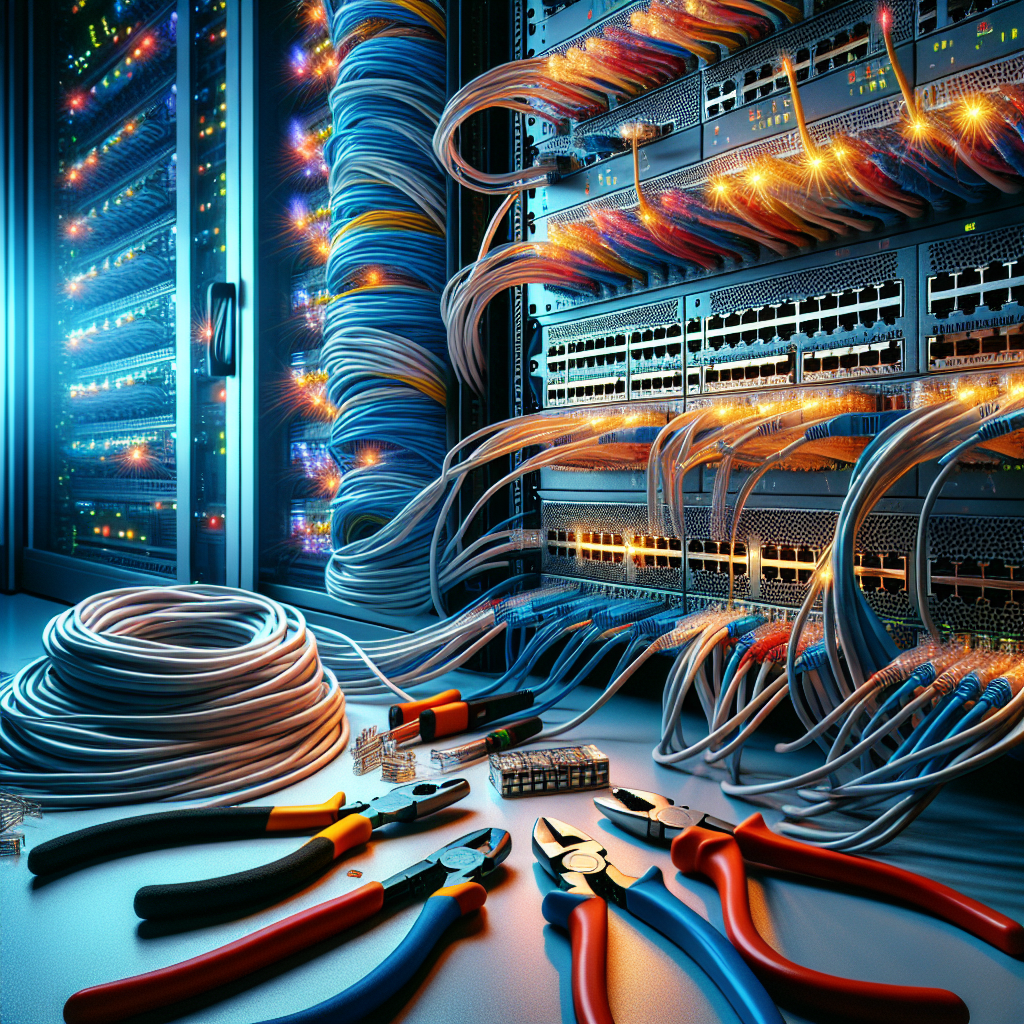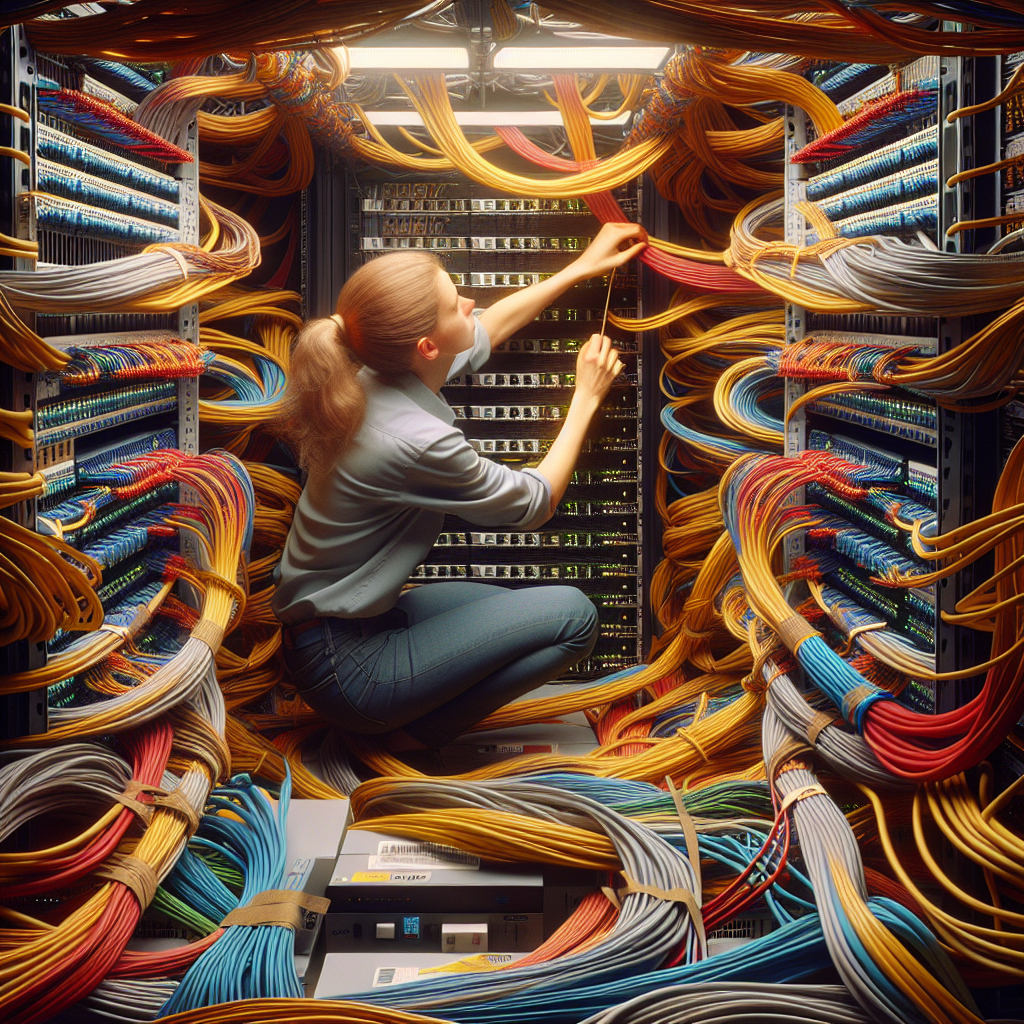In today’s rapidly evolving digital landscape, the backbone of any successful commercial operation is a robust and reliable network infrastructure. **Network cable installation** is a critical component of this infrastructure, ensuring seamless communication, data transfer, and connectivity across all business operations. Understanding the intricacies of network cable installation can significantly impact the efficiency and productivity of your business.
Whether you are setting up a new office, expanding your existing network, or upgrading outdated systems, the process begins with a comprehensive assessment of your specific needs. This includes identifying the types of cables required, such as Cat5e, Cat6, or fiber optic cables, and determining the optimal layout for your network. Factors like building structure, distance, and data load must be carefully considered to ensure maximum performance and reliability.
Moreover, professional installation by experienced technicians is paramount. They not only ensure that the cabling meets industry standards but also implement best practices to minimize potential disruptions and future maintenance issues. Investing in quality installation today can save your business significant time and money in the long run.
Our team at Rapid Voice Data Solutions is dedicated to providing top-notch infrastructure wiring and equipment installation services. We understand the challenges of finding the right contractor, which is why we offer a comprehensive plan to help you achieve your goals efficiently and effectively. Visit our website to learn more and get started today! Click here.
Factors Influencing Installation Costs
When it comes to **commercial network cable installation pricing**, several factors can significantly influence the overall cost. Understanding these factors can help businesses budget more accurately and make informed decisions.
First, the type of cable used plays a crucial role in determining costs. Options range from traditional Cat5e cables to advanced fiber optic cables, with each type offering different levels of performance and price points. For instance, fiber optic cables, while offering higher data transfer speeds and better performance over long distances, are generally more expensive than Cat5e or Cat6 cables.
Another significant factor is the complexity of the installation. This includes the layout of the building, the number of connections required, and the accessibility of the installation sites. Complex installations that require extensive routing through walls, ceilings, or floors will naturally incur higher labor costs.
The distance over which the cables need to be run also impacts the cost. Longer distances require more cable and potentially additional hardware like boosters or repeaters to maintain signal integrity. Additionally, the need for specialized equipment can drive up costs. For example, installations requiring high-end network switches, patch panels, or racks will see an increase in the overall budget.
Lastly, labor costs vary depending on the expertise of the technicians and the region where the installation is taking place. Higher-skilled technicians may charge more, but their expertise can ensure a more reliable and efficient network setup, potentially saving costs on future maintenance and upgrades.
By considering these factors, businesses can better plan their network installations to balance performance needs with budget constraints.
Types of Network Cables and Pricing
Choosing the right network cable is pivotal for both performance and cost-effectiveness in **commercial network cable installation pricing**. Various types of network cables are available, each with its own pricing and performance attributes.
Cat5e (Category 5 Enhanced) cables are one of the most common types used in commercial settings. They are cost-effective and support speeds up to 1 Gbps over distances up to 100 meters. Typically, Cat5e cables are priced between $0.20 to $0.30 per foot, making them an economical choice for many businesses.
Cat6 (Category 6) cables offer enhanced performance, supporting speeds up to 10 Gbps over shorter distances (up to 55 meters). They are more expensive than Cat5e, averaging between $0.30 to $0.50 per foot. However, the improved performance and reduced crosstalk make Cat6 a popular choice for networks requiring higher speed and reliability.
Cat6a (Category 6 Augmented) cables further enhance performance by supporting 10 Gbps speeds over the full 100-meter distance. They also provide better shielding against interference. Cat6a cables are priced around $0.50 to $0.90 per foot, justifying the cost with their superior performance for demanding network environments.
Fiber Optic cables are the premium choice, offering exceptionally high speeds and performance over long distances. Fiber optic cables are immune to electromagnetic interference, making them ideal for data centers and enterprise networks. Prices for fiber optic cables vary widely, typically ranging from $1 to $6 per foot, depending on the type (single-mode or multi-mode) and other specifications.
Understanding the types of network cables and their associated costs helps businesses make informed decisions that align with their performance needs and budget constraints. Selecting the right cable can significantly impact both the initial installation cost and the long-term efficiency of the network.
Obtaining Accurate Installation Quotations
Obtaining accurate installation quotations is a crucial step in managing **commercial network cable installation pricing** effectively. Understanding the various factors that influence the cost will help you receive detailed and precise quotes from contractors.
Firstly, provide a comprehensive overview of your project requirements. Include specifics such as the total number of network points, the types of cables required, and any special installation conditions. This information allows contractors to offer more accurate estimates.
Next, consider the labor costs. Labor charges can vary based on the complexity of the installation, the duration of the project, and the expertise required. Ensure that the quotation includes a detailed breakdown of labor costs, including any potential overtime fees.
Don’t forget to factor in the cost of materials. This includes not only the cables themselves but also connectors, patch panels, and other necessary hardware. Request a detailed list of all materials included in the quote to avoid unexpected expenses.
Site surveys are another essential component. Many contractors will conduct a site survey to assess the existing infrastructure and identify potential challenges. This survey helps in providing a more accurate quote and can also highlight any additional work that may be required, such as drilling or installing conduits.
It’s also important to inquire about warranty and support services. A comprehensive warranty can add value to the installation by covering future repairs or replacements. Support services, such as maintenance contracts, should be clearly outlined in the quotation.
Finally, compare multiple quotes. By obtaining several quotations, you can compare the scope of services and pricing to ensure you are getting the best value for your investment. Look beyond the total price and examine the details of each quote to make an informed decision.
Accurate quotations set the foundation for a successful network installation project, enabling you to budget effectively and avoid unexpected costs.
Budgeting for Network Cable Installations
Budgeting for network cable installations involves various considerations to ensure that your project remains within financial constraints while achieving optimal results. A well-planned budget helps in managing expenses and preventing cost overruns.
Start by defining the scope of your project. Determine the number of devices that need to be connected, the types of cables required, and the extent of the installation. This will give you a clear picture of the resources needed and help in estimating the costs more accurately.
Next, consider the costs of materials. The types of cables (e.g., Cat5e, Cat6, fiber optic) and their quantities will significantly impact your budget. Additionally, account for other essential components like connectors, patch panels, and cable management accessories. Prices can vary based on quality and supplier, so it’s wise to get multiple quotes from different vendors.
Labor costs are another major factor. The complexity of the installation, the size of the team required, and the duration of the project will affect labor expenses. Make sure to include both the hourly rates and any potential overtime charges. It’s also beneficial to inquire about the contractor’s experience and expertise, as higher-skilled technicians might command higher rates but offer more efficient service.
Don’t overlook the importance of site preparation and additional work. Any necessary modifications to the building’s infrastructure, such as drilling holes, installing conduits, or upgrading electrical systems, should be factored into your budget. Conducting a thorough site survey can help identify these requirements early on.
Another key aspect is to allocate funds for unexpected expenses. Unforeseen issues, such as discovering outdated wiring that needs replacing or encountering structural challenges, can arise during installation. Setting aside a contingency fund—typically around 10-15% of the total budget—can help manage these surprises without derailing your project.
Lastly, consider the long-term costs associated with maintenance and upgrades. Investing in high-quality materials and professional installation might have higher upfront costs but can reduce future expenses related to repairs or upgrades. Additionally, some contractors offer maintenance packages that can be included in your budget planning.
Effective budgeting for network cable installations requires careful planning and consideration of all potential costs. By thoroughly assessing your needs and obtaining detailed quotations, you can create a realistic budget that ensures a successful and cost-effective installation.
Choosing the Right Installation Contractor
Choosing the right installation contractor is crucial for the success of your commercial network cable installation project. The right contractor not only ensures that the job is done correctly but also helps in avoiding costly delays and rework.
Start by researching potential contractors. Look for companies with a proven track record in network cable installations, especially in commercial settings. Reading online reviews and testimonials can provide insights into their reliability and quality of work. Additionally, check for any industry certifications or affiliations, such as BICSI or RCDD, which indicate a high level of professionalism and expertise.
Experience is a key factor. Contractors with extensive experience in handling similar projects are more likely to understand the complexities involved and can offer valuable advice on the best materials and methods to use. Don’t hesitate to ask for references or case studies of previous projects to gauge their capabilities.
Communication is also vital. A good contractor should be able to clearly explain the project plan, timelines, and costs. They should be responsive to your queries and provide regular updates throughout the project. Effective communication helps in managing expectations and ensures that any issues are promptly addressed.
Another important consideration is the contractor’s approach to safety and compliance. Ensure that they adhere to all relevant regulations and standards, as non-compliance can lead to legal issues and safety hazards. Ask about their safety protocols and whether they carry adequate insurance to cover any potential damages or injuries during the project.
Cost is, of course, a significant factor, but it shouldn’t be the sole criterion. While it’s essential to stay within your budget, the cheapest option may not always be the best. Evaluate the quotations in detail, considering the quality of materials, labor, and the contractor’s reputation. It’s often worth paying a bit more for a contractor who offers superior quality and reliability.
Finally, consider the post-installation support and warranty offered by the contractor. A reliable contractor should provide a warranty on their work and be available for any necessary maintenance or repairs. This ensures that your network remains functional and efficient long after the installation is complete.
By carefully evaluating these factors, you can choose a contractor who will deliver a high-quality installation that meets your needs and budget. Visit our website to learn more and get started today! Click here.





